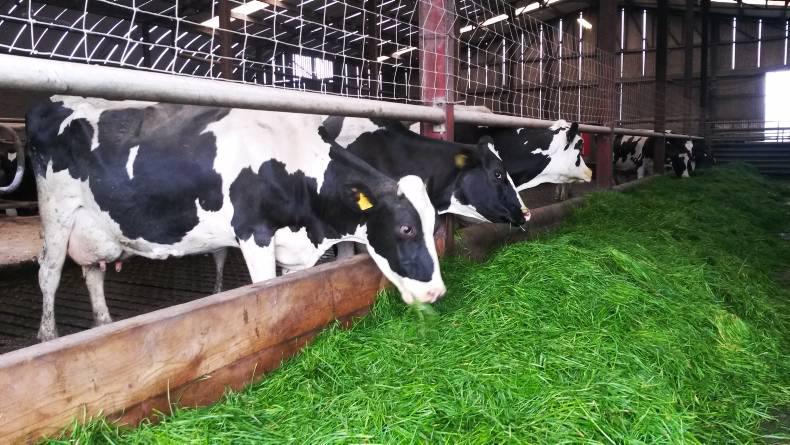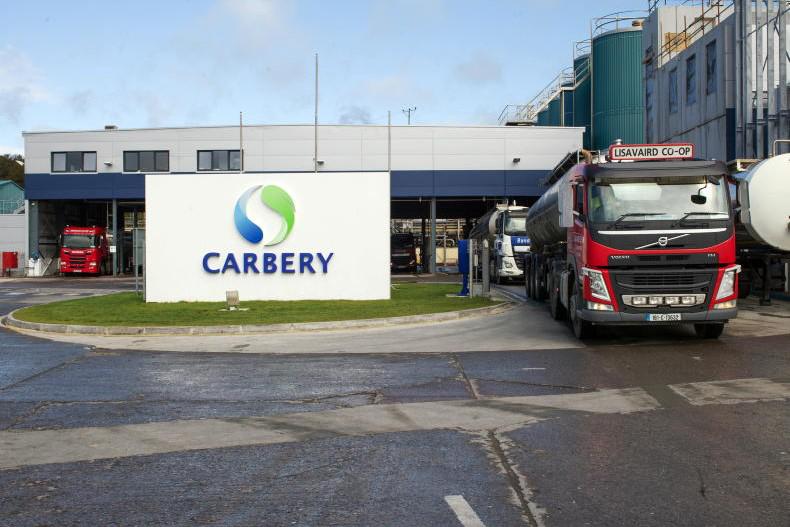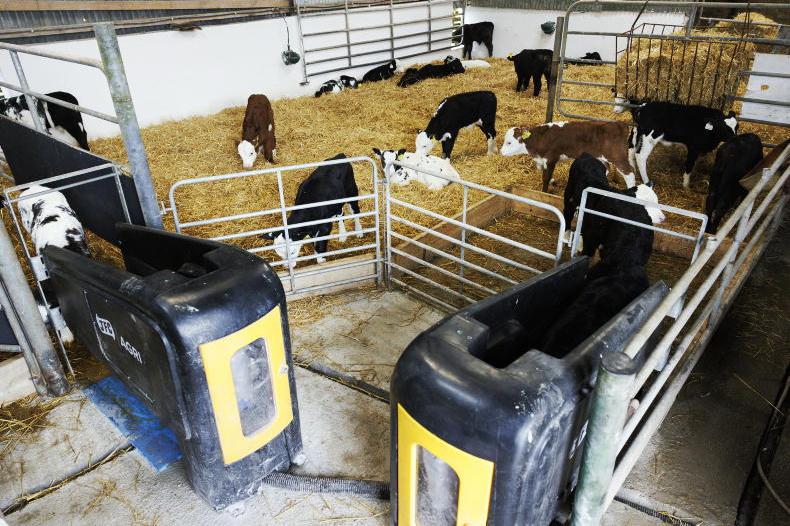The Fullerton family farm near Tobermore, Co Derry, was the venue for the National Milk Records (NMR) open day last week. Approximately 400 people attended the event, which included seminars and a tour of the farmyard.
Sean Fullerton farms 350 acres, along with his wife Margaret, his father Pat and his son Kevin. There are currently 240 cows in the Lisnamuck Holstein herd. The herd has increased from 140 to 240 cows over the past four years.
As cow numbers have increased, Sean has been focused on improving milk from forage and reducing concentrates fed to cows. A fragmented farm layout around busy roads and heavy land surrounding the farmyard means cows are housed throughout the year.
To get more forage into cows, Sean started feeding grass using existing silage equipment. Soon afterwards, he decided to purchase a Zero Grazer ZG75 with capacity of 36m2. Five loads of grass are fed daily and, on average, Sean can do this in an hour and a half.
Speaking at the open day, David Mawhinney from McLarnon Feeds said that milk from forage has been increasing and is currently at 2,841 litres. “Compared to the CAFRE average benchmark of 1,600 litres, this is very respectable,” said Mawhinney.
According to Sean, zero-grazing has allowed total meal fed to be reduced by 4.4t per week. He maintained that it allows grass to be fed four weeks earlier in the spring compared with if cows were grazing. It lengthens the season in the autumn and improves overall utilisation.
“Grazed grass is the cheapest feed for cows, but in some circumstances such as on this farm, zero-grazing can be equally or even more cost effective” claimed Niall O’Reilly from Zero Grazer. He maintained that grass utilisation typically increases by 30% with zero-grazing, although acknowledged that good management practices such as reseeding, weed control, soil testing and appropriate fertiliser application are also vital.
In terms of costs, figures presented by Ronald Annett from McLarnon Feeds suggested that the costs of zero-grazing were only slightly less than a three-cut silage system (£148.90 versus £151.90 per tonne of dry matter fed). However, these costs were similar to a poorly managed conventional grazing system where 65% of grass is utilised (£149.70/t). A well-managed grazing system with 75% grass utilisation had costs of £129/t, said Annett.
TMR
In the winter, cows on the Fullerton farm are fed a total mixed ration (TMR) of wholecrop wheat, grass silage, plus 3kg of blend per cow for low yielders and 5kg for high yielders. All cows are then fed to yield in the parlour at 0.45kg/litre to a maximum of 9kg.
Because some cows were calving down with too much condition, Sean installed an out-of-parlour feeder in the dry cow shed as he did not have facilities to batch-dry cows into different groups. He now feeds second-cut silage and hay to dry cows and a blend with extra calcium is fed in the feeder.
The aim is for cows to be eating 4kg of meal on the day they calve to ease the transition to lactation. The extra calcium fed to dry cows is to reduce incidence of retained cleanings and uterine infections.
Robot
Getting more from high-performing cows was also a priority for Sean so, in February 2014, a double-box SAC Future Line MAX robotic parlour was installed by Pearsons to milk freshly calved cows. Currently, 90 cows are milked through the robot and the remaining 160 are milked through the existing 14-point swingover parlour.
Sean said: “The main reason to install the robot was to get freshly calved cows milked three times a day. I would not have had time to do this in the existing parlour. Currently, the high yielders are milking 3.2 times a day on average. It has reduced parlour time by about three hours each day.”
He admits that initially it took a while to get used to the robot and get it working correctly, but it now works well in his farming system. Once yields drop below 30 litres a day, cows are moved to the main herd.
In the robotic parlour, cows are automatically pre-dipped, blow-dried and pre-milked into a preparation liner. This milk is then discarded. Cups are attached and, afterwards, cows are sprayed.
The first month, and especially the first few hours of a calf’s life, is the most important time for determining how the animal will thrive and ultimately perform as a cow, said Mairéad O’Grady from MSD Animal Health.
She encouraged farmers to take control of feeding the calf once it is born by removing the calf from the cow and feeding 3.5 to four litres of the dam’s colostrum within the first two hours. Another two litres is required in the following 10 hours and if colostrum is of poor quality, increased volumes should be given.
Mairéad said that, on average, 26% of calves receive insufficient amounts of colostrum and 37% of colostrum fed is of poor quality. She said that leaving the calf to suckle the cow increases the chances of infection and is unreliable as a means of ensuring the calf gets enough milk.
“Calf health tends to suffer as often farmers are too busy with other things on the farm and calves do not receive the correct amount of attention,” Mairéad said.
She maintained that farmers should be aiming to have less than 5% mortality and less than 10% of calves treated or sick within the first 56 days of life. Scour is responsible for 38%, and pneumonia for 14%, of calf deaths in the first month of life.
Drugs
“The answer is not always in a bottle – administering drugs may cure a sick calf but if you are doing this too often there is a problem in your system somewhere,” she said.
Stressors can be reduced by ensuring that calf housing is clean, well ventilated, warm and dry. This is important for avoiding infection and immune system suppression.
Mairéad also said that monitoring growth rates and comparing with industry standards was a good practice so see how heifers are performing.
Common targets are for calves to be double their birthweight by two months, 60% of their body weight at mating and 90% of body weight at first calving.
She stressed the financial importance of reaching first calving targets.
“Cows last longer, have higher lifetime production and produce more milk in the second and third lactation when calving at 24 months compared with every month after,” she said.
Visitors to the Fullerton farm were also told that genomic selection will soon become part of routine herd management. According to representatives from NMR, their Genetracker service (launched in 2014) can help to identify the genetic potential of a young animal.
Genetracker involves taking a tissue sample from the calf by an ear notch using a tissue sampling unit (TSU) and sending it off for analysis. Within two months, a report is returned showing results across 31 traits for each animal.
This technology allows farmers to make targeted use of sexed semen from top bulls on the best heifers as well as knowing which heifers are worth the expense of rearing. The genomic test costs £32 per calf, plus VAT.













SHARING OPTIONS